The Ferrari 156 was a racing car made by Ferrari in 1961 to comply with then new F1 regulations that reduced engine displacement from 2.5 to 1.5 litres, similar to the pre-1961 Formula Two class for which Ferrari had developed a mid-engined car also called 156 F2.
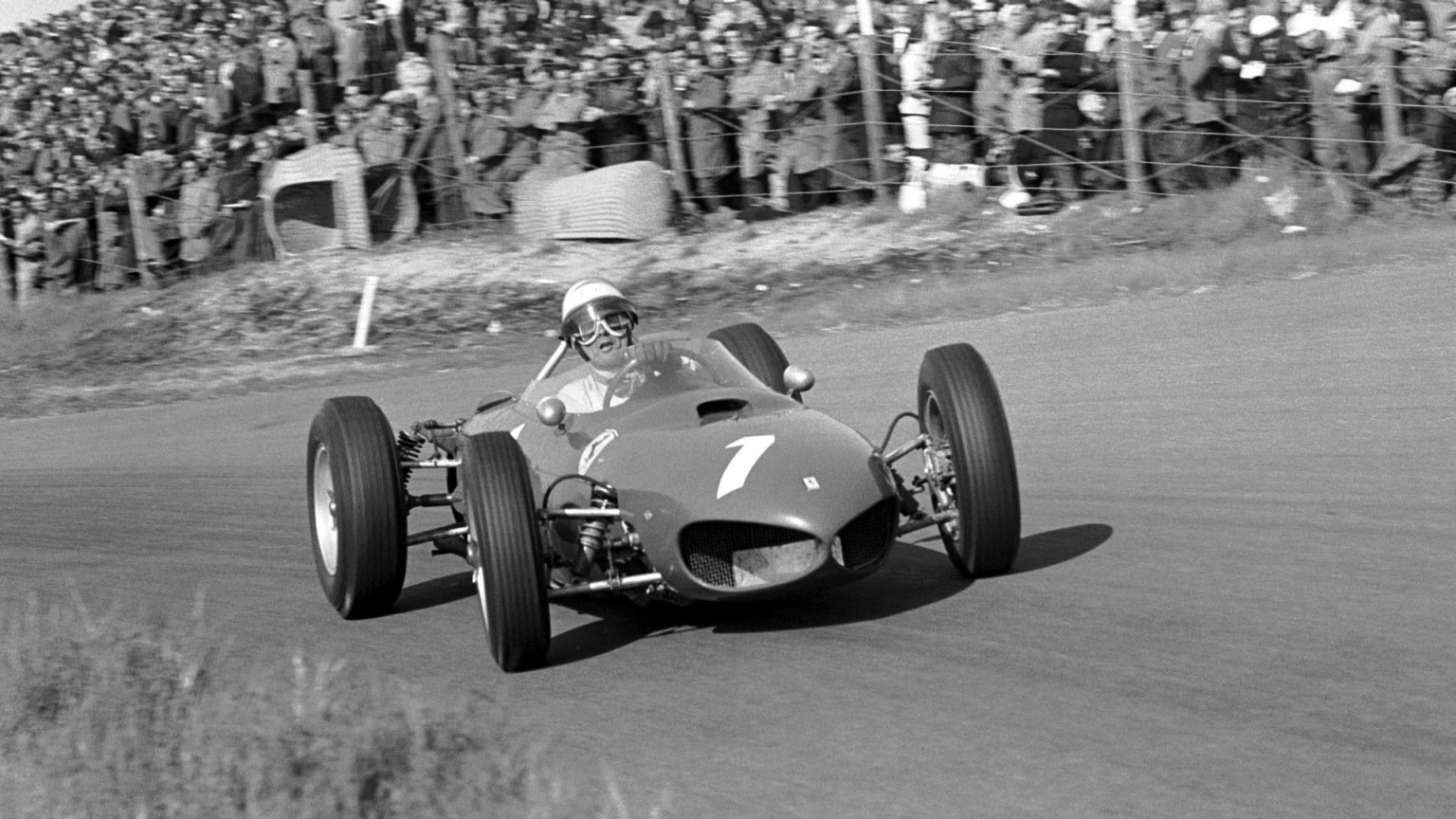
Phil Hill won the 1961 World Championship of Drivers and Ferrari secured the 1961 International Cup for F1 Manufacturers, both victories achieved with the 156.
The 1961 version was affectionately dubbed "sharknose" due to its characteristic air intake "nostrils".
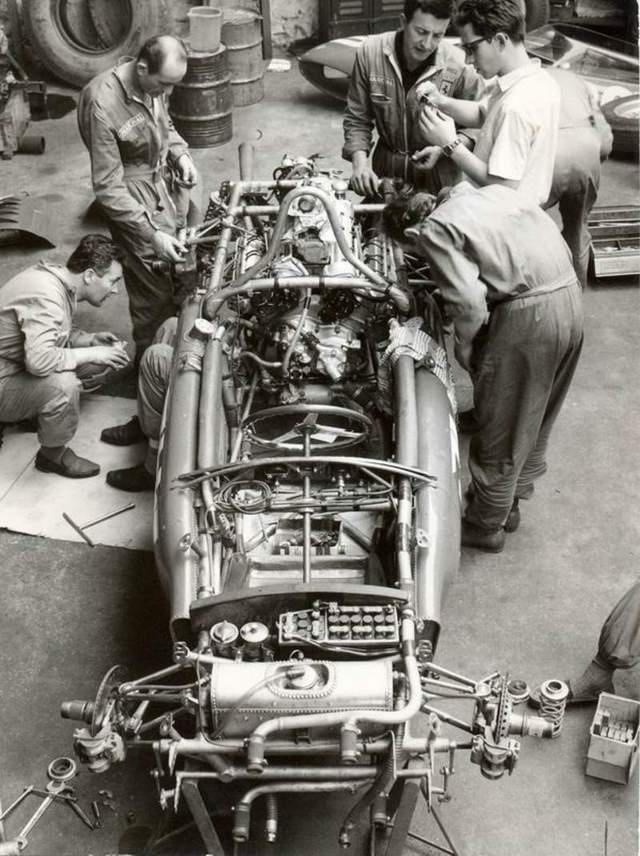
Ferrari factory policy saw all the remaining sharknose 156s scrapped by the end of the 1963 season.
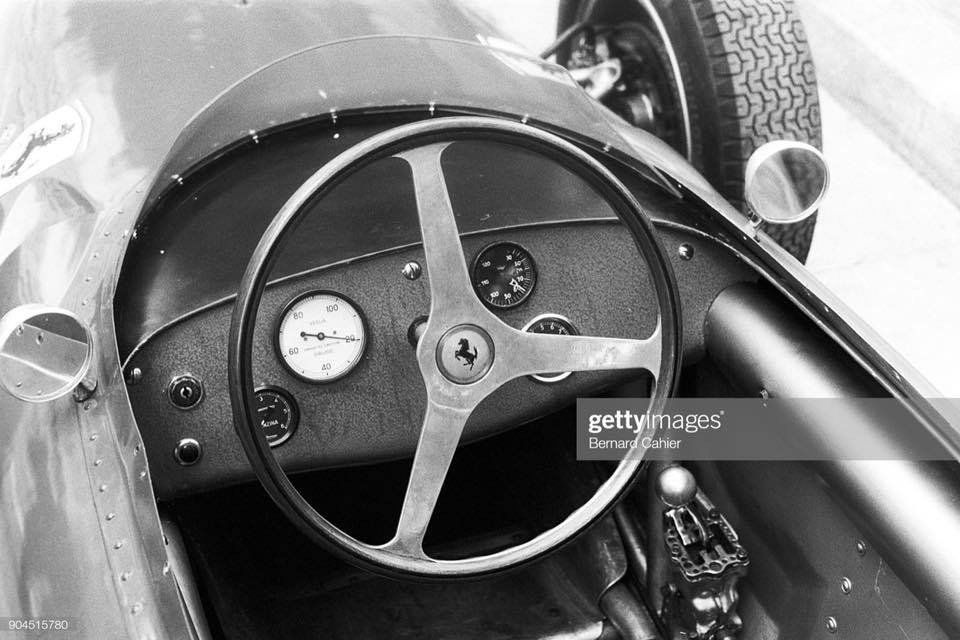
Cockpits of the day were minimalist - we are a year or so away from leather bound wheels in Ferrari cockpits. Veglia tach and gauges probably displaying water temperature and oil temperature and pressure. Classic Ferrari ‘open gate’ change to the right which lasted all the way to the semi-automatic paddle-shift boxes pioneered by Ferrari in the 3.5 litre 640 V12 in 1989.
Nevertheless, such a 156 is exhibited in the "Galleria Ferrari" at Maranello, probably a replica. A similar intake duct styling was applied to the five SP-series Ferraris in 1961 and 1962 that were also designed by Carlo Chiti and then again, over forty years later, to the Ferrari F430.

Ferrari started the season with a 65-degree Dino engine, then replaced by a new engine with the V-angle increased to 120-degrees and designed by Carlo Chiti. A V-6 engine with 120-degree bank is smoother at producing power because every 120-degree rotation of engine crankshaft produces a power pulse. This change increased the power by 7 kW (10 hp). Bore and stroke were 73.0 mm × 58.8 mm (2.87 in × 2.31 in) with a displacement of 1,476.60 cc (90.108 cu in) and a claimed 140 kW (188 hp) at 9500 rpm.
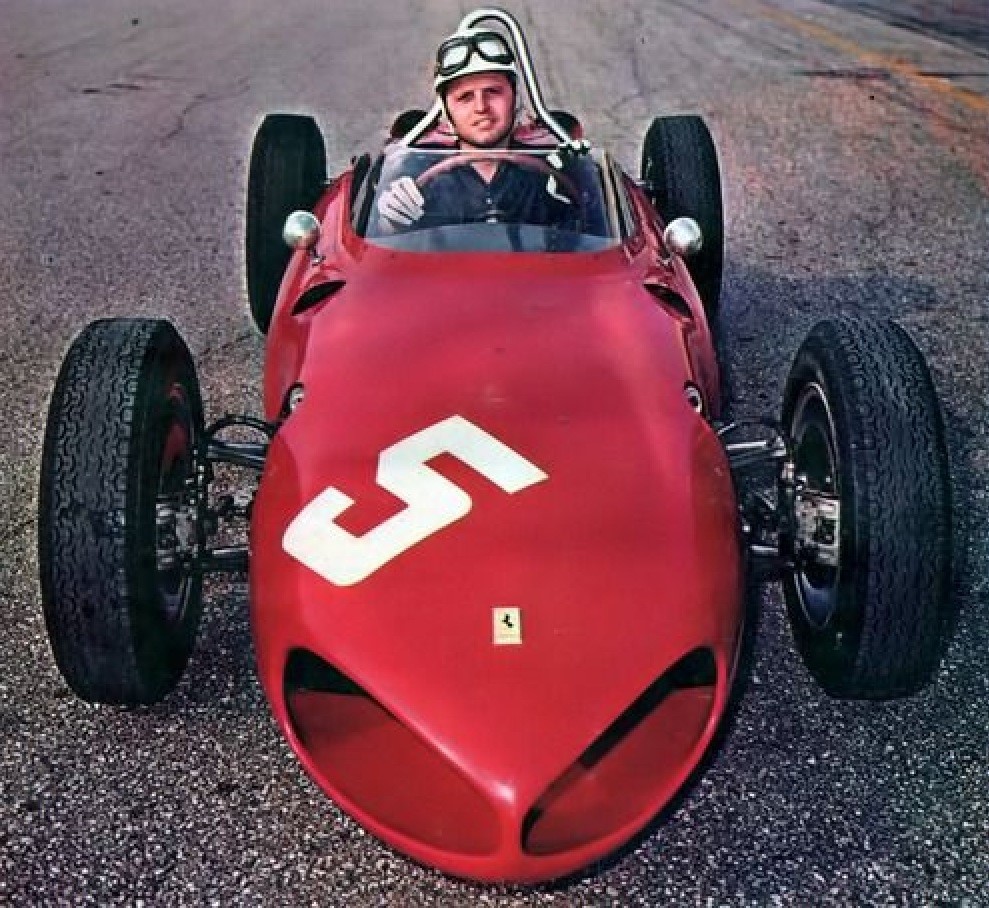
Giancarlo Baghetti, Ferrari 156, in 1962. Unattributed.
For 1962, a 24-valve version was planned with 147 kW (197 hp) at 10,000 rpm, but never appeared. At the 1962 British Grand Prix, Phil Hill raced a new version with a six-speed transmission mounted in front of the engine. In August, at the German Grand Prix, Lorenzo Bandini tested a non-sharknose variant with modified front and rear suspension and a smaller radiator, heralding the 156 Aero used in 1963.
The updated Ferrari 156, used in the 1963 and 1964 seasons, did not feature the distinctive sharknose design. but had a rather conventional intake, somewhat larger than the Ferrari 158 introduced in 1964.
In 1963 the 12-valve version, fitted with Bosch direct-fuel injection instead of carburetors, achieved that power level. The last victory for the Ferrari 156 was achieved by Italian Lorenzo Bandini in the 1964 Austrian Grand Prix.
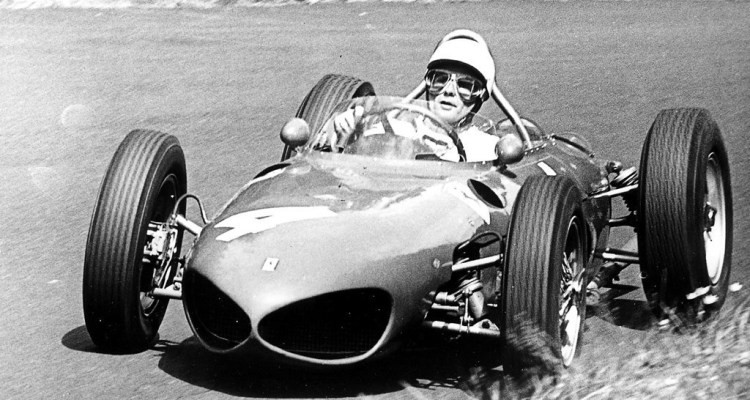
The Legend: Ferrari 156 F1 “Sharknose”. By Søren Navntoft, September 4, 2019.
Of all the cars that have won the World Cup in Formula One, at least one of each has been preserved for posterity – with the exception of the one that won in 1961. The Ferrari 156 F1 “Sharknose” is that exception. Most will have probably heard the tale of Enzo Ferrari cynically ordering the remaining cars to be scrapped.
Nowadays we can wonder whether Enzo’s arrogance towards history was the sole reason behind the legendary scrapping? An act that was foolish at the time, but almost criminal today.
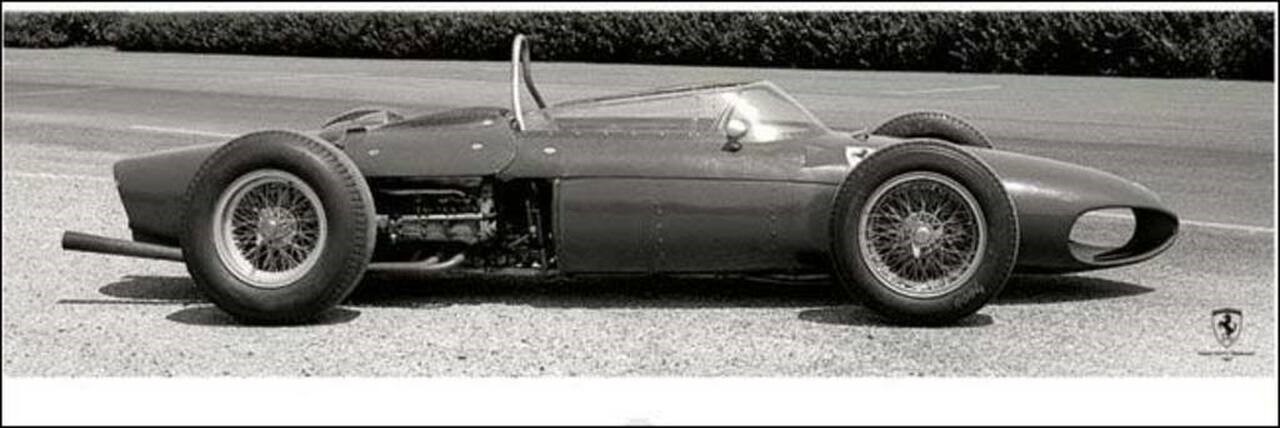
The Ferrari 156 was the factory’s first true entry into mid-engined racing cars.
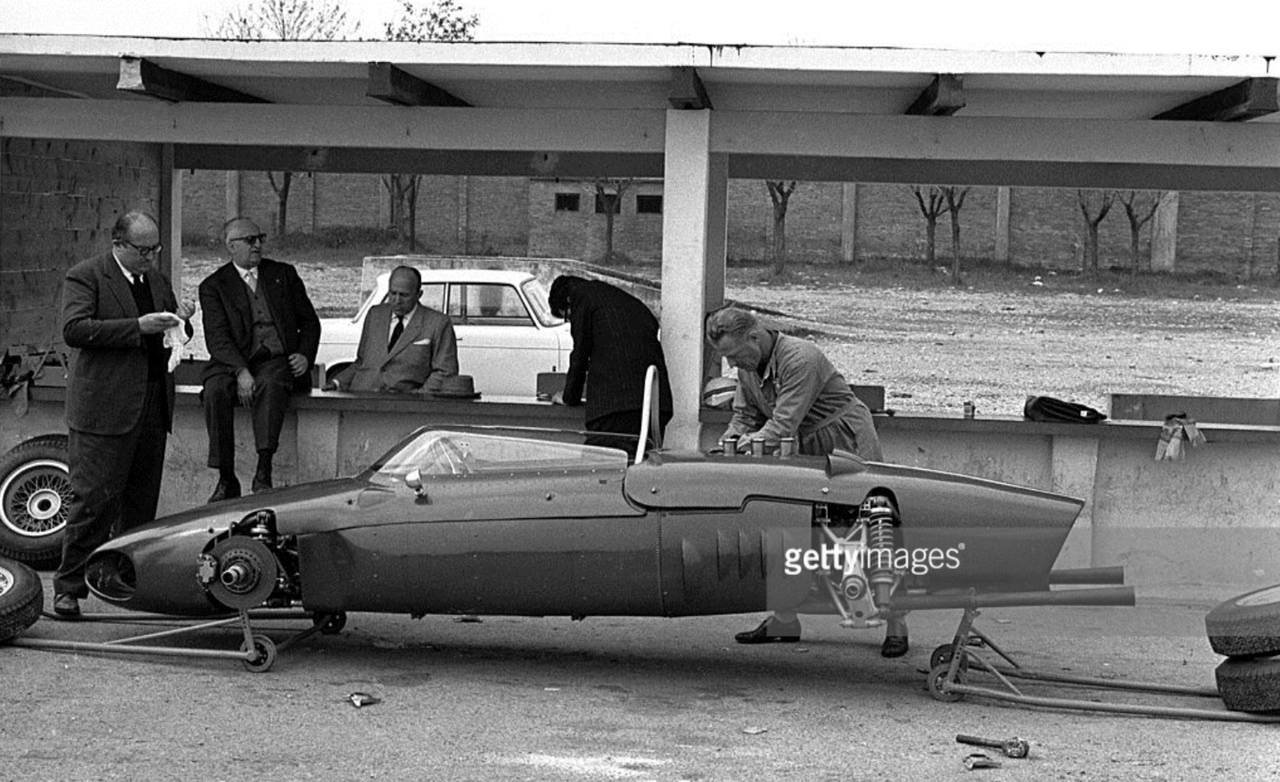
An earlier test than the one above, this chassis fitted with the 65 degree V6. Chiti is at left then the boss, another gent and copiously making notes is famous Ferrari engineer, Mauro Forghieri, then in his early days with the Scuderia.
It was designed by Carlo Chiti, who later worked wonders at Alfa Romeo’s racing division, Autodelta. As was still popular at the time, the Ferrari 156 was constructed around a tubular spaceframe chassis.
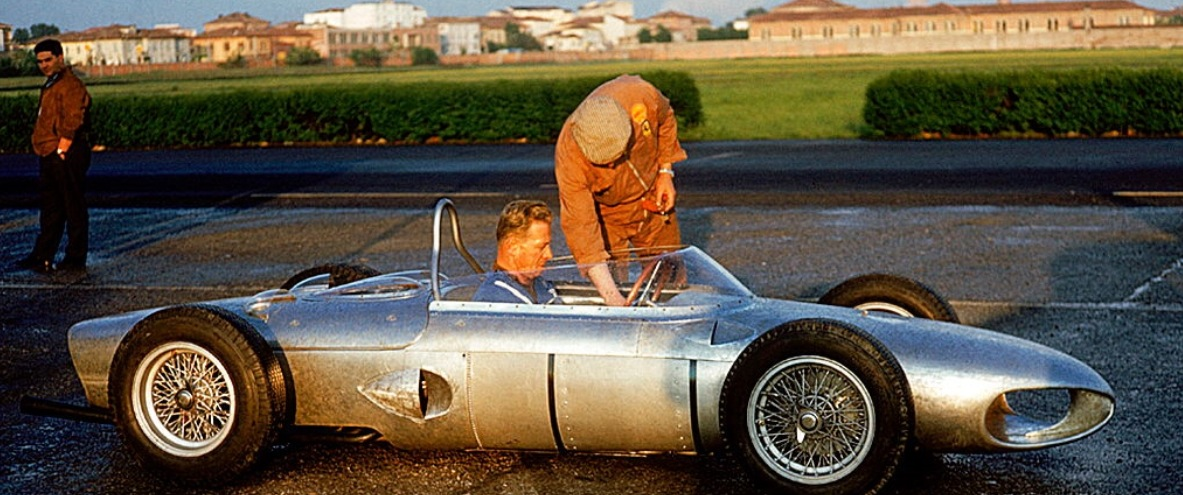
Brand spanking new Ferrari 156, the aluminium body still unpainted, awaits its Modena test in early 1961…
However, the 156 was still considered to be a bit behind the leading designs from the likes of Lotus and BRM, but the Ferrari proved to be extremely service-friendly and this gave it a competitive advantage. The real star of the 156 was however the Dino engine, with the small 1.5-litre 120 degree V6 being truly innovative while complying with the new F1 regulations. It was an extraordinarily lightweight construction as well: in comparison, it weighed 15 kg. less than, for example, the 4-cylinder Coventry-Climax used by many of the British teams. The high angle of the cylinder banks also offered the engine a position in the car which provided an advantageously low center of gravity.
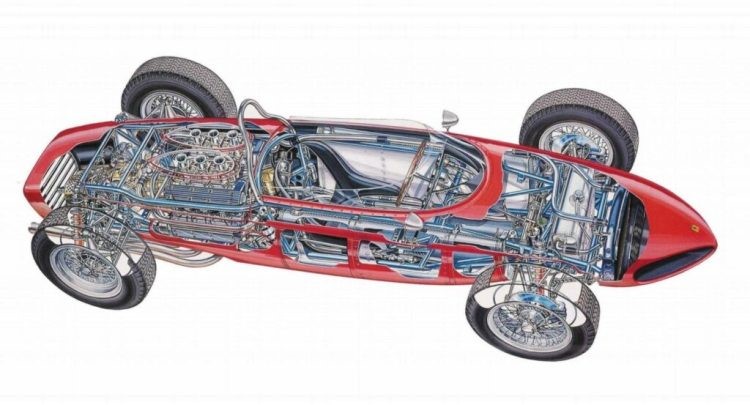
As the 1961 season kicked off, several of the competing teams were still discussing the need for development within the new regulations, while Ferrari simply arrived with a brand new chassis and a newly developed engine. The result was noticeable. Five wins in seven races and, at Spa, the 156 even took first, second, third and fourth places. With the competition left in their wake, the World Cup became an internal showdown between American Phil Hill and German Wolfgang von Trips. In the end, the American pulled the longest straw and took the Driver’s World Championship title by a tiny margin with two wins to his credit. Sadly though, the victory was gravely overshadowed by the accident at Monza late in the season. It could very well have been the culmination of von Trip’s career, as a third place finish would have been enough to secure him the World Championship title. Unfortunately, he clashed with Jim Clark and his Lotus. Von Trip’s car was catapulted into the air and he was thrown out of the car. Both von Trips and 14 spectators were killed that day and it has remained a black chapter in both Formula One and Ferrari’s history.
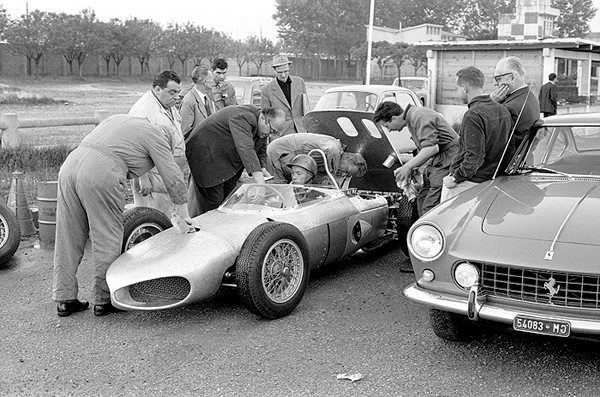
Early track tests of Ferrari 156 F1 at Modena Aerautodromo in April 1961. Seated in this looks like Richie Ginther. Leaning to the other car is Enzo Ferrari and Phil Bill. On far left (leaning over the front of the car) is Luigi Bazzi ("senior technician"). Man in dark suit fiddling with the steering wheel is Carlo Chiti. Behind him, in white overall, is Medardo Fantuzzi. Far in the back with a hat is Romolo Tavoni. The other car is the 1960 Ferrari 250 GT 2+2 Coupe s/n 1287GT "MO 54083". Klemantaski collection.
Some say that von Trip’s death plagued Enzo and that could be why the “Sharknose” cars were subsequently banished from the earth’s surface. Ferrari faced great criticism for his involvement in a number of accidents, including the fatal accident which had claimed both De Portago and Nelson’s life in Mille Miglia in 1957. The von Trips accident may just have been the final drop which caused the beaker to overflow and, during a moment of remorse, Enzo decided upon the sad future for his winning F1 car.
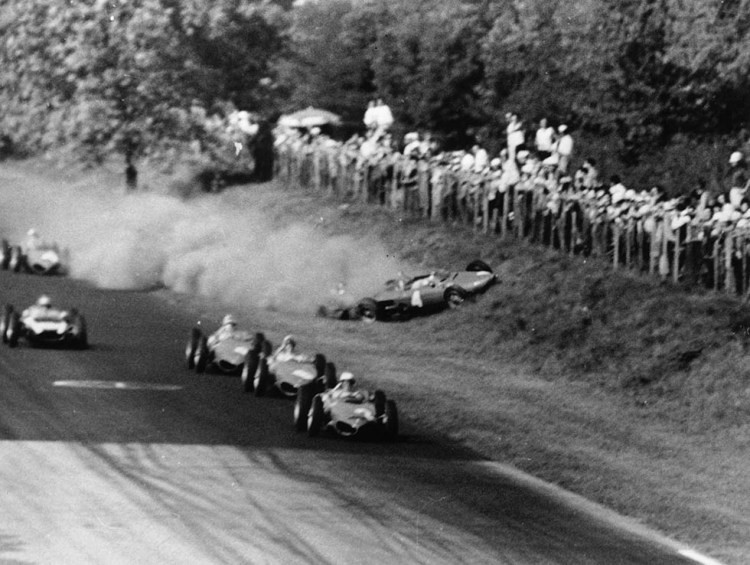
10th September 1961: the Ferrari of Wolfgang von Trips is about to crash into the crowd during the disaster at Monza. The car in the lead is n.2, driven by Phil Hill, who went on to win the race. Photo by Keystone/Getty Images.
Romolo Tavoni, who was one of the team managers at Ferrari in 1961, later explained that the reason could also be that Enzo felt betrayed by his loved ones. Many – also very prominent people from the team behind him such as Chiti, Bizzarini, Tavoni and several others – left Ferrari when the 1961 season was over and the choleric and dramatic boss may well have responded by grabbing the project by the roots and destroying the whole thing – well and thoroughly.

Artwork by Paul Chenard.
It should, of course, be borne in mind that the F1 regulations once again faced a radical change and the 156 model was now useless. Ferrari’s economy did not tolerate grand decisions to save cars for posterity admirers. Everything needed to be focused on tomorrow’s racing cars, including the big winners from yesterday. Angelo Castelli, a former Ferrari technician, said that all the frames for the 156 cars were cut and used instead to reinforce the concrete mix used for one of the new factory halls. Visitors and employees can say today that they are standing on top of the legendary “Sharknose” cars.
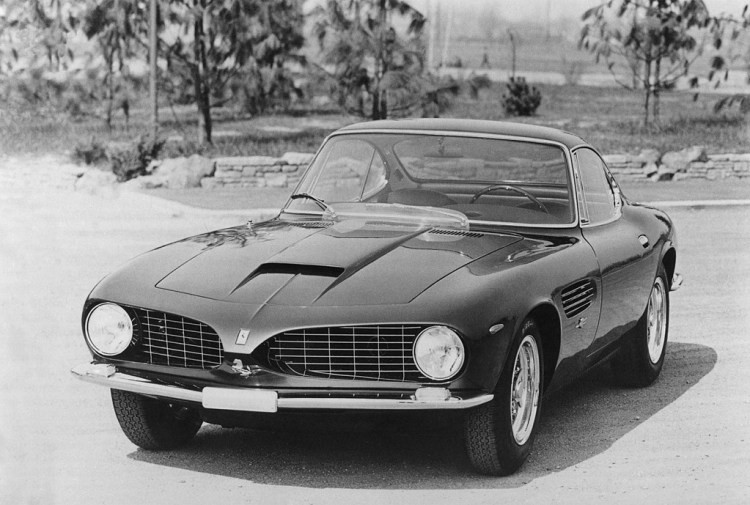
Bertone’s interpretation of the 1961 Ferrari 250 GT for the Geneva Motorshow, which he cleverly equipped with nostrils inspired by the 156 F1 “Sharknose”.
One of the giants within Ferrari’s history is gone and that is of course a shame. The 156 “Sharknose” could today almost be comparable to Formula 1’s answer to the Lighthouse of Alexandria or the Hanging Gardens of Babylon.
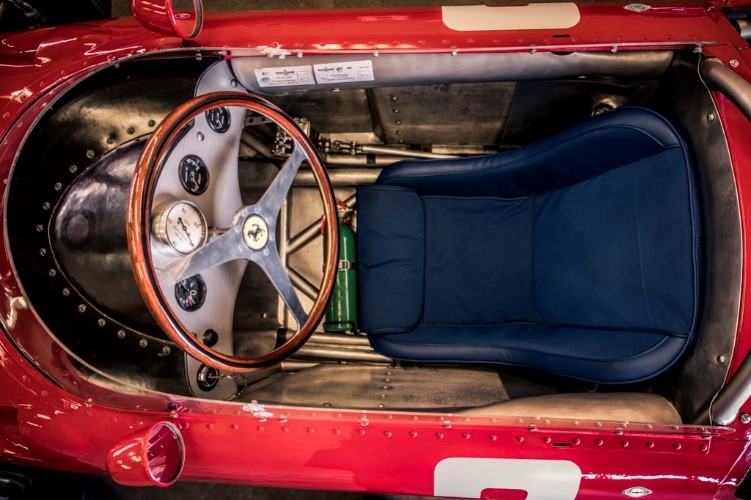
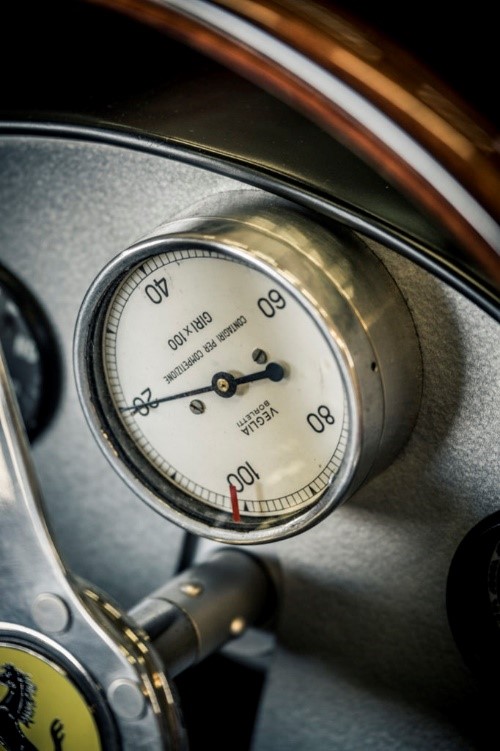
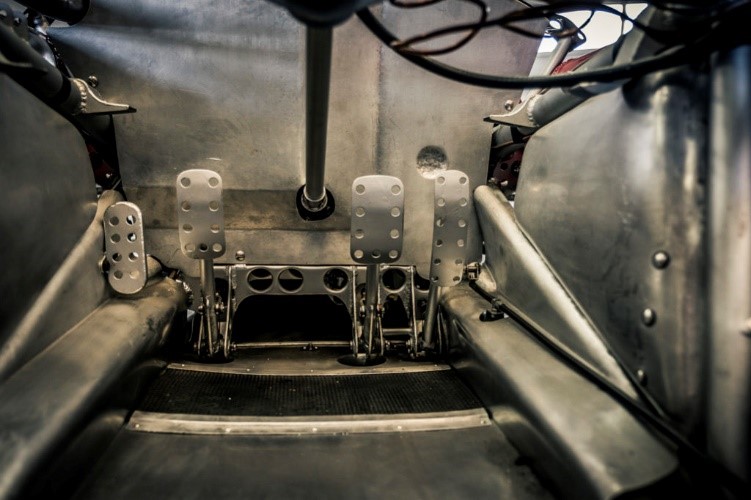
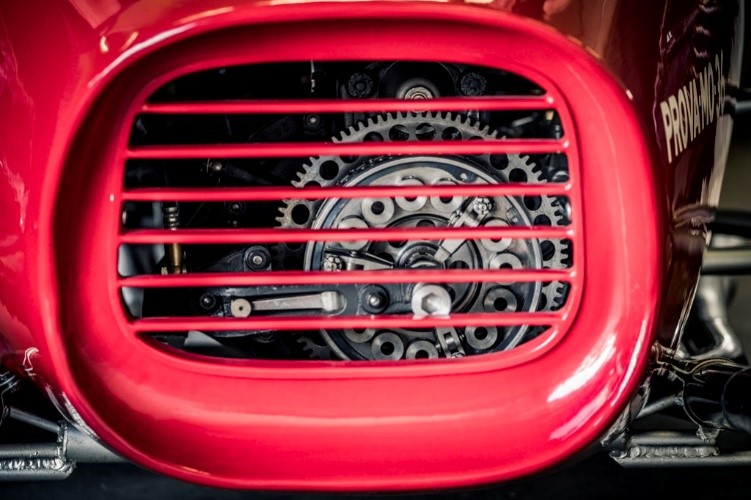
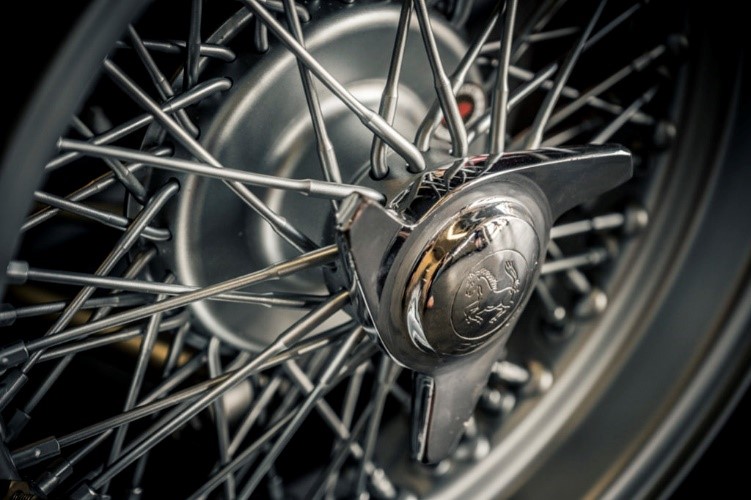
Of course, it only makes the legend of the most recognisable of all Ferrari’s racing cars even bigger. Had Enzo not swung the ax back then, the “Sharknose” would have no doubt still been popular today, but perhaps not a mythical highlight in automotive history.
Belgian enthusiast Jan Biekens (the word enthusiast is in all honesty a much too mild word for describing his passion) simply could not settle with pictures and anecdotes alone. He therefore decided to recreate one of the famous cars. Starting with an original engine and gearbox, he began the crazy journey of recreating a “Sharknose” from scratch. He and his team only had photographs and a few drawings to work from. If you haven’t already seen the short movie explaining how they went about creating the yellow “Sharknose”, then you definitely owe it to yourself to spend the next 13 minutes taking it all in. It really is quite astonishing…
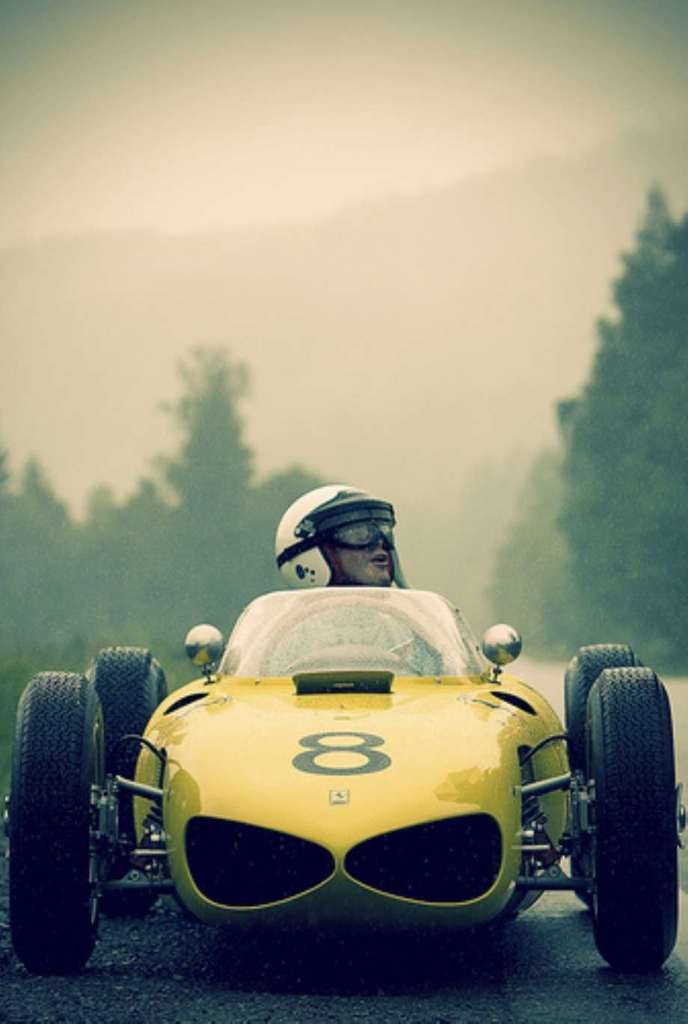
1961. Ferrari shark-nose dominates under new rules.
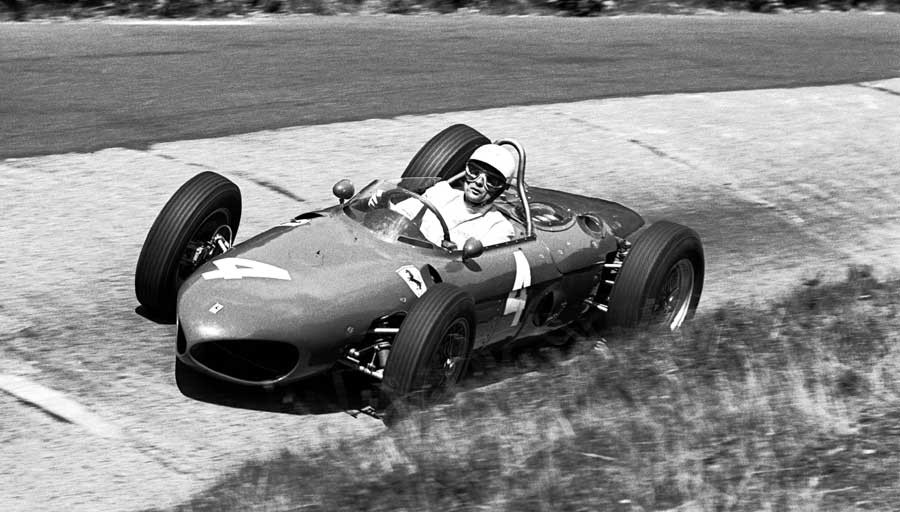
Phil Hill in the dominant Ferrari “shark-nose”. Credit Sutton Images.
Ferrari was better prepared than anybody else for the new formula and dominated the season. Phil Hill took the title. It was all change for 1961, with the introduction of a 1.5-litre formula.

1961. Richie Ginther, Ferrari 156, followed by Graham Hill, BRM P48/57.
The British manufacturers had been slow to respond, but not so Ferrari. Effectively sacrificing the previous season, the Italian team developed a rear-engined car and a new V6 engine. Climax and BRM lagged behind; the only engine available for the British teams was the four-year-old 1475cc Climax F2.
Von Trips, Phil Hill and American Richie Ginther were lucky to have works Ferrari seats. Welcome variety was provided by Porsche. Already successful in Formula Two, the German marque signed Gurney and Bonnier from BRM. Lotus had an excellent new chassis, the 21 and the promising Jim Clark and Ireland to drive it. Graham Hill and Brooks led the BRM attack, while once again Brabham and McLaren teamed up at Cooper.
More than ever before, Moss had underdog status. Walker was not allowed to buy a new Lotus 21 and had to make do with the old 18 model.
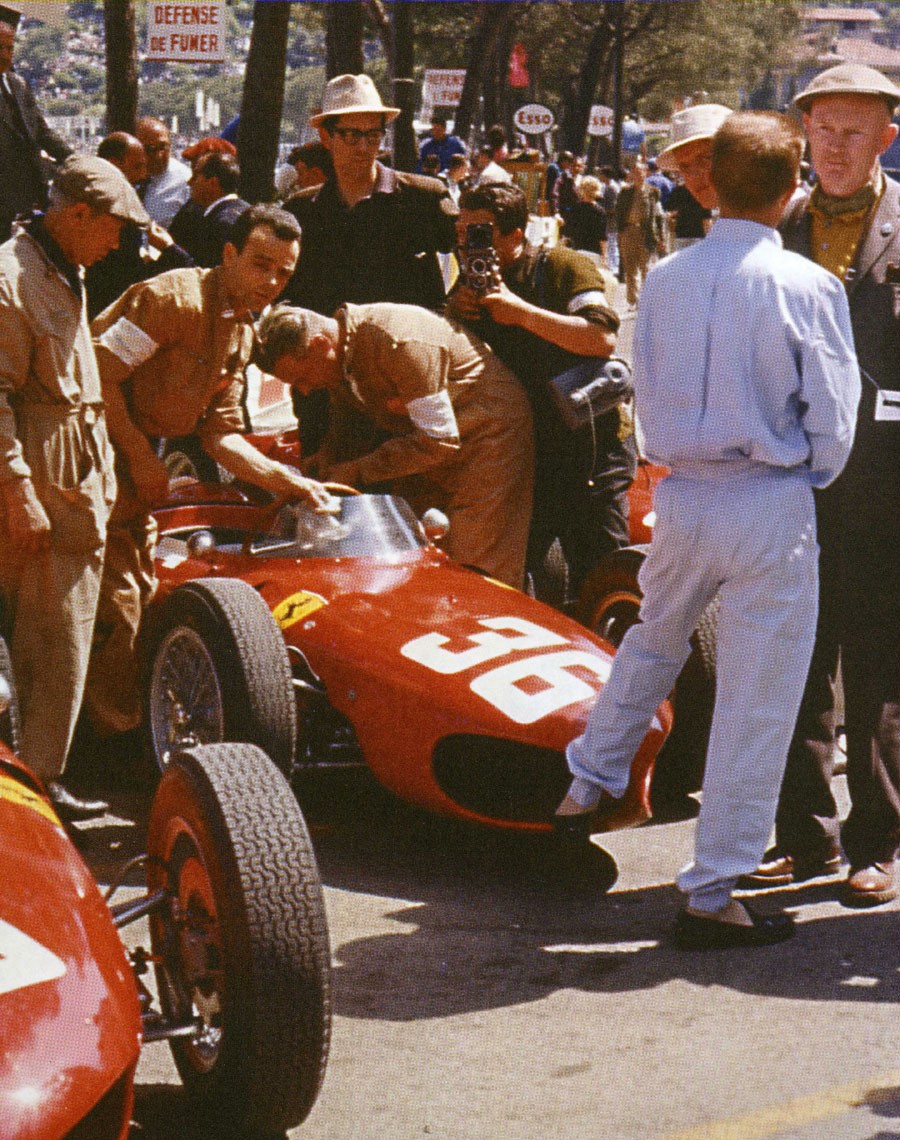
Ferraris in Monaco.
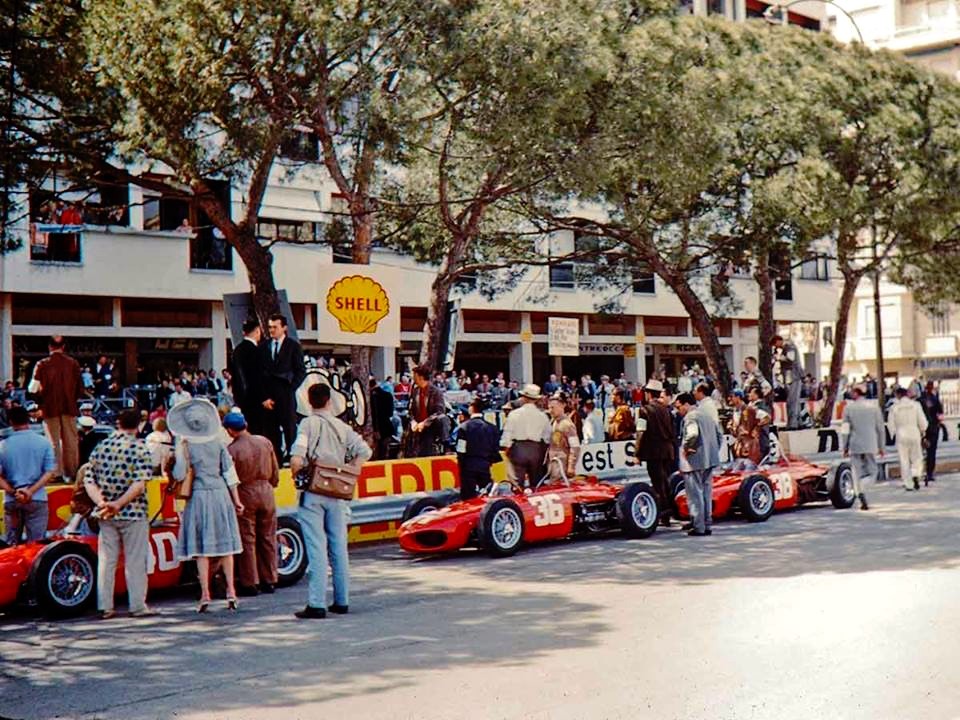
Ferrari pit, practice, Monaco 1961. Wolfgang von Trips drove car 40, Richie Ginther drove car 36 and Phil Hill drove car 38. Ginther was the only driver (of any car) who had anything for Stirling Moss (who won) at Monaco, with Ginther right behind. Hill was a distant 3rd and von Trips an even more distant 4th. But, aside from the Nurburgring (where Moss won again), the Ferrari 156 swept the rest of the races.
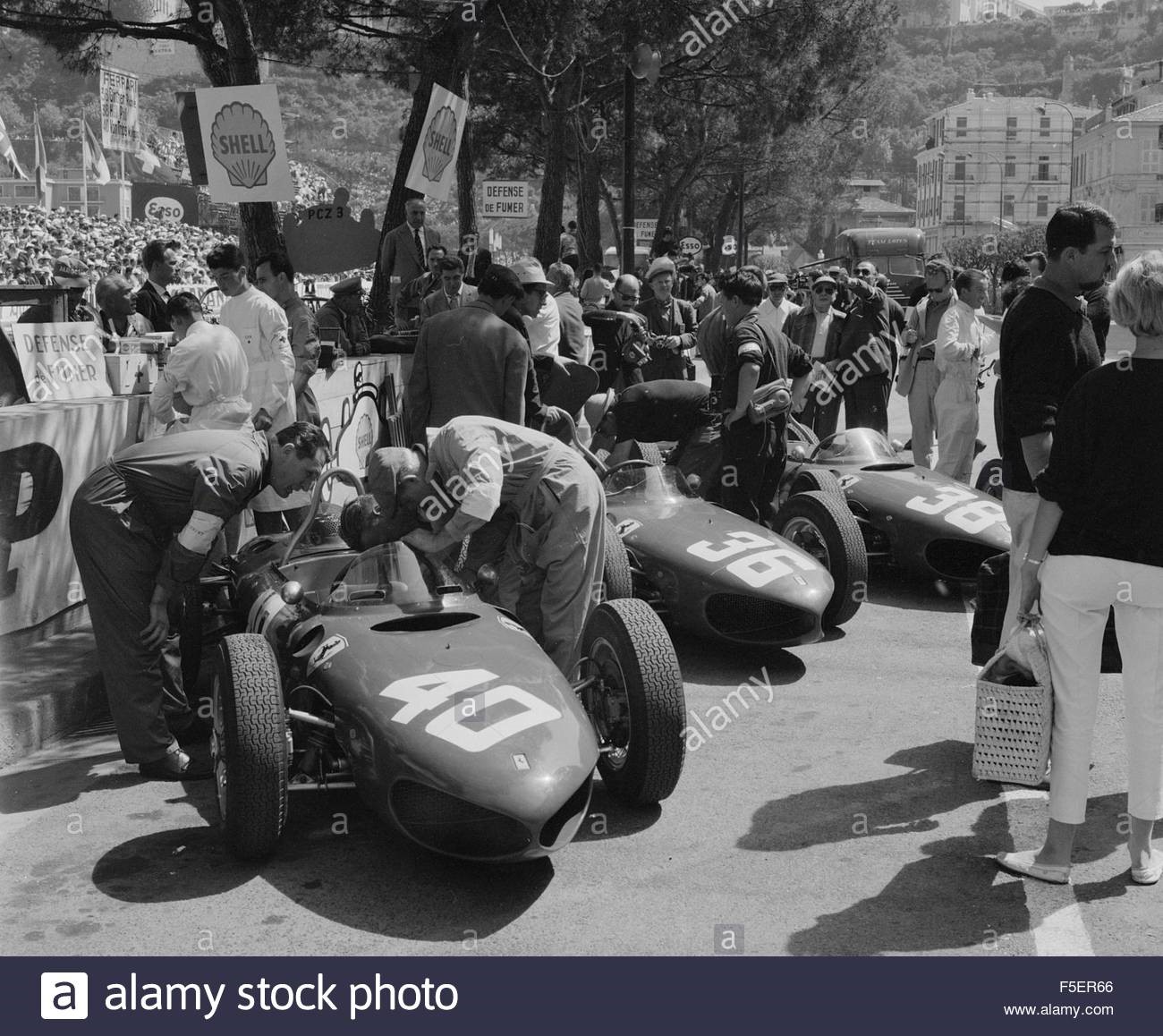
Ferrari 156 Sharknose in pits at 1961 Monaco Grand Prix.
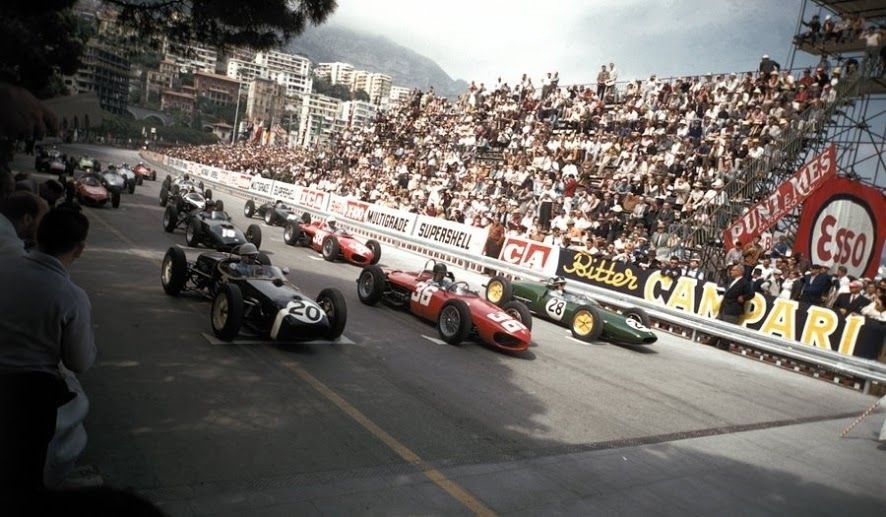
Grid shot: n.20 Moss - Lotus 18 Climax, n. 36 Ginther’s Ferrari 156 and n. 28 Clark Lotus 20 Climax front row. Gurney’s Porsche 718 and Phil Hill’s Ferrari 156 on row 2. Unattributed.
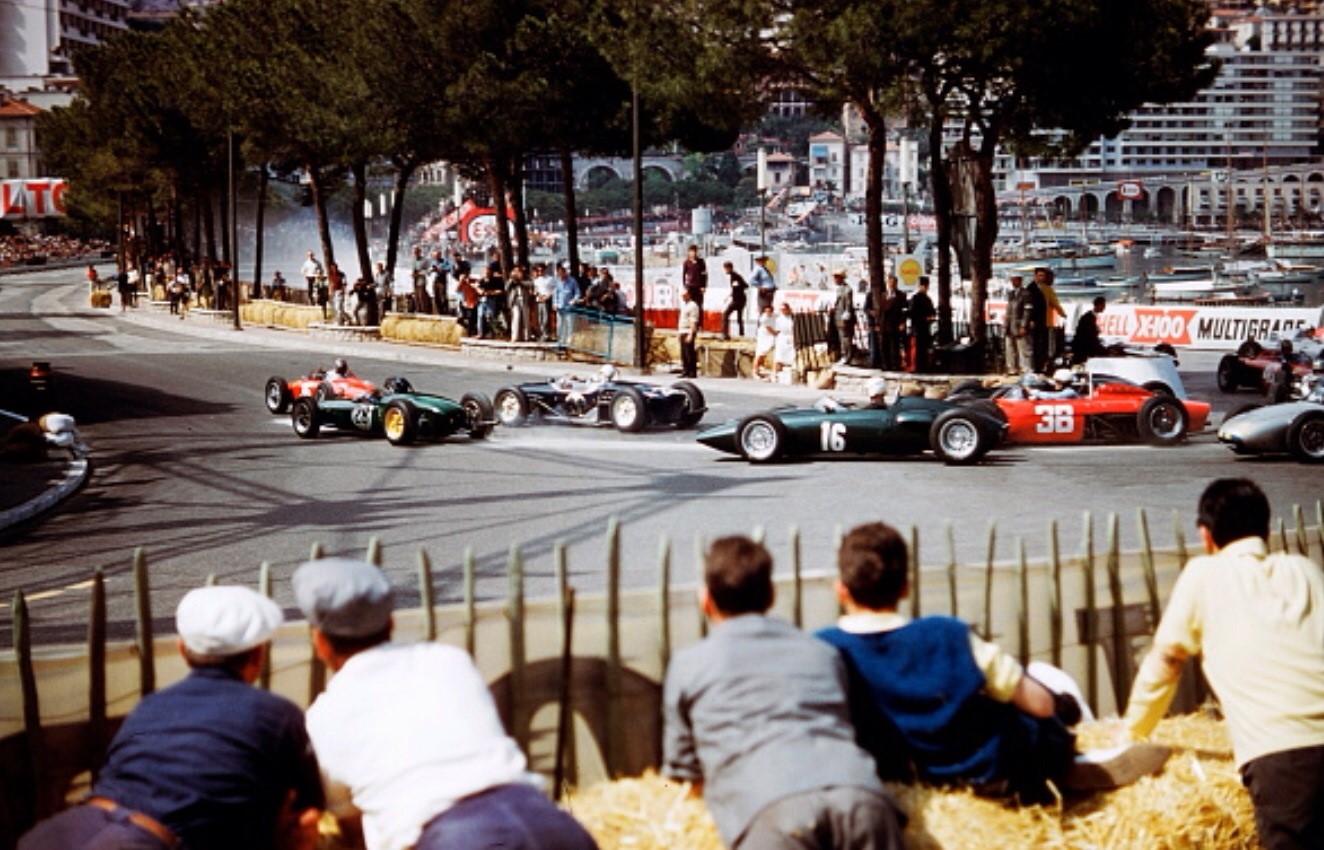
Hill’s Ferrari, Clark outside n. 28, Moss inside with the missing bodywork, n. 16 Tony Brooks BRM P48/57 Climax, n. 36 Ginther and the silver nose of Gurney’s Porsche 718. GP Library.
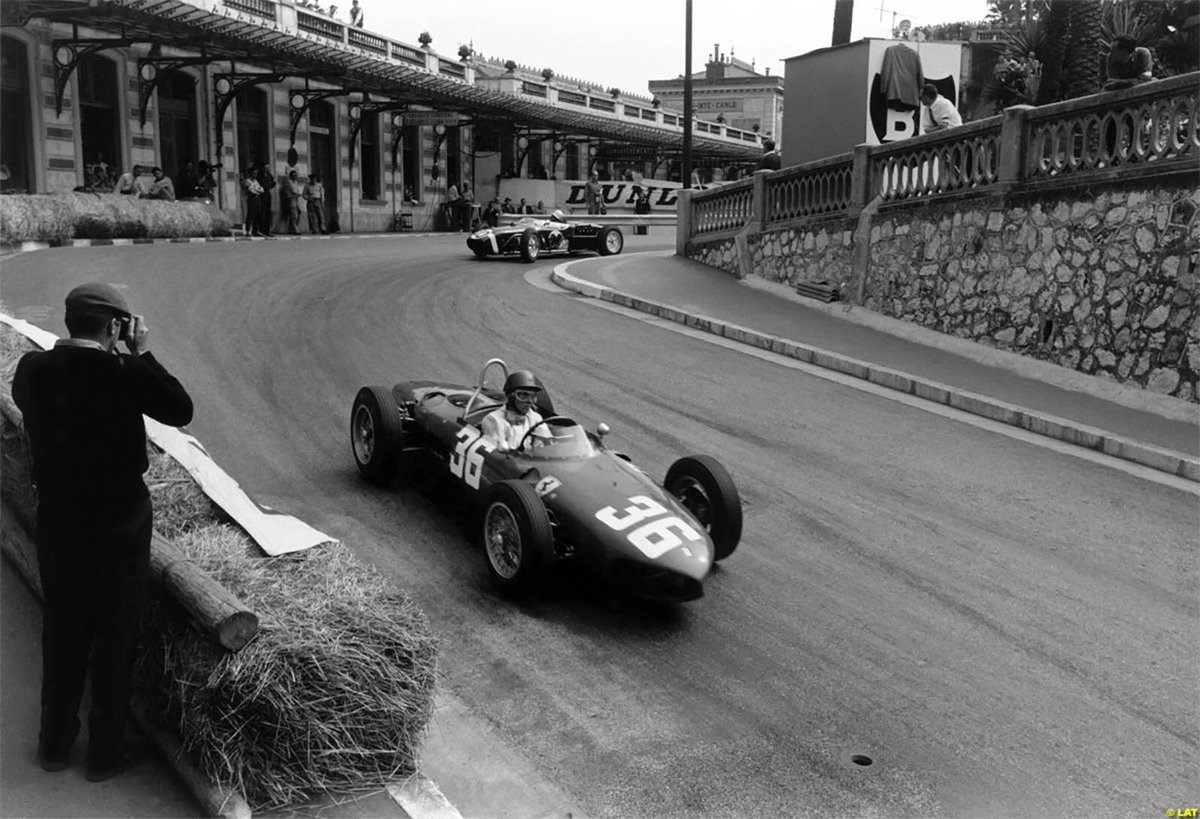
Richie Ginther, Monaco 1961.
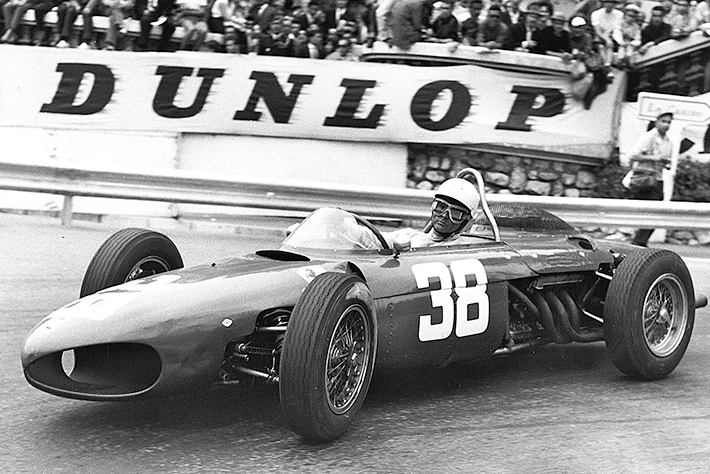
Phil Hill in action in the Station (now Loew's) Hairpin. The 156's 65-degree V-6, based on the original 2.0-2.4 V-6, was replaced mid-season with an even more powerful 120-degree V-6. Power was the key to Ferrari's dominance in 1961.
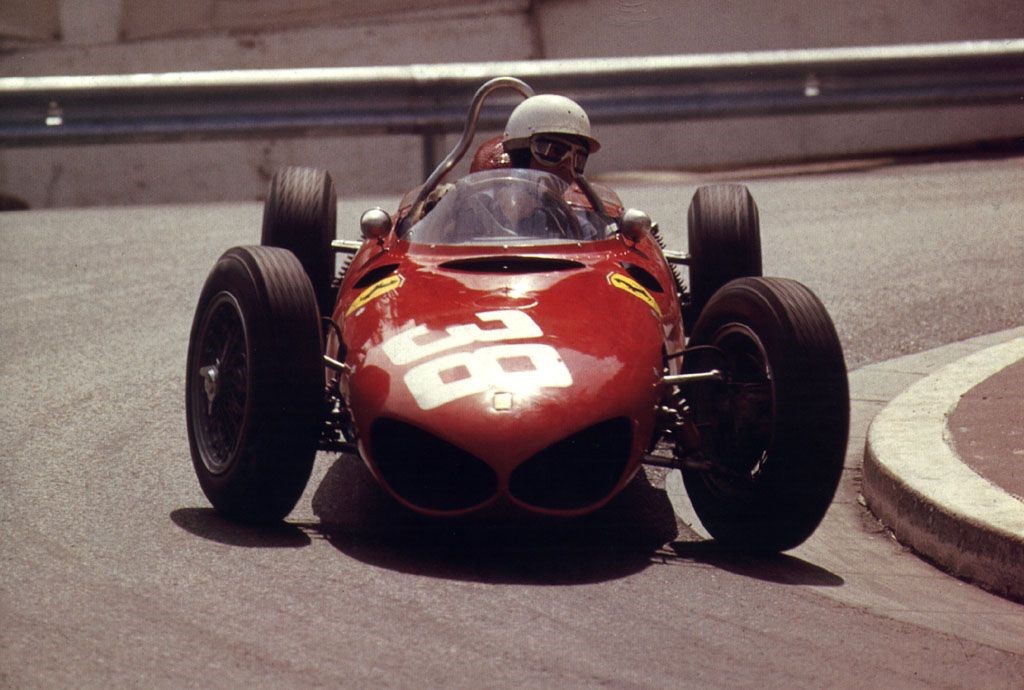
Phil Hill, Monaco 1961.
And yet in Monaco Moss turned in one of the drives of his career, to brilliantly beat the Ferraris of Ginther and Hill.
Ferrari took its revenge when von Trips scored his first win at Zandvoort, with Hill in second.
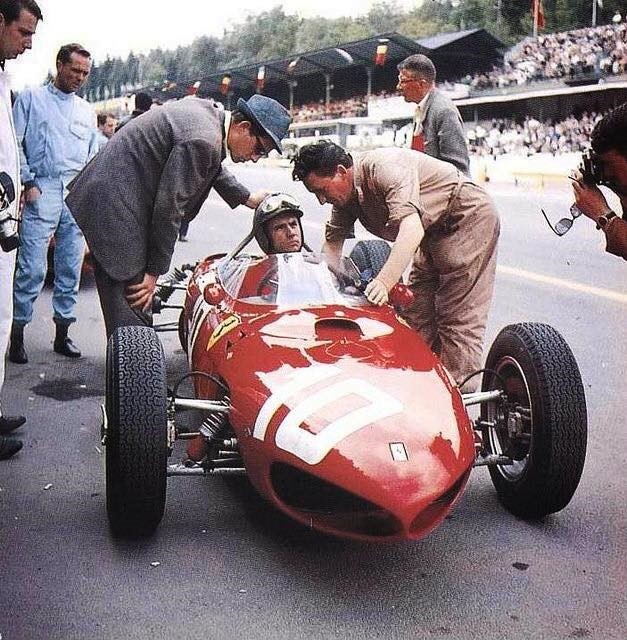
Willy Mairesse in Spa-Francorchamps, where he started and finished his F1 career. Photo by Ferrarism.

Ferrari pits, Spa 1961, the 4 156 cars being prepared, Gendebiens yellow car contrasts the n.2 car of von Trips, the winning n.4 of Phil Hill and Richie Ginthers third placed car n.6. Pinterest.
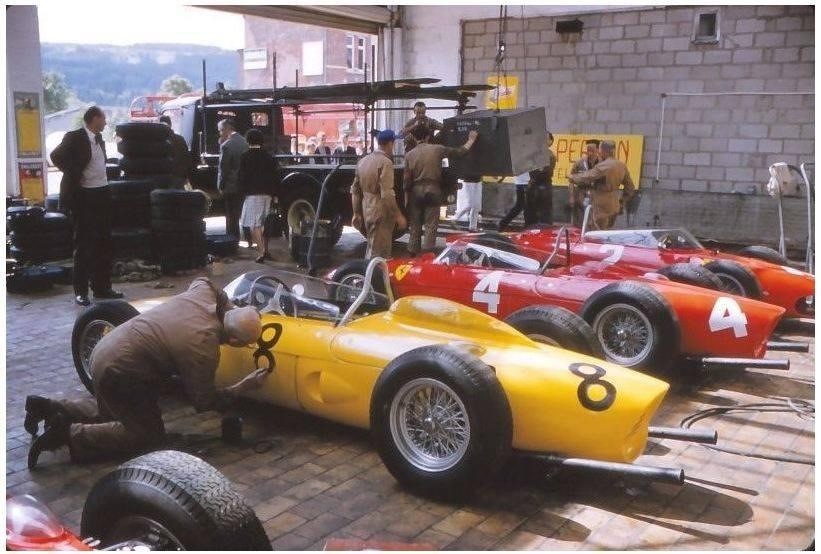
Same scene from the other side of the Ferrari pit. Pinterest.
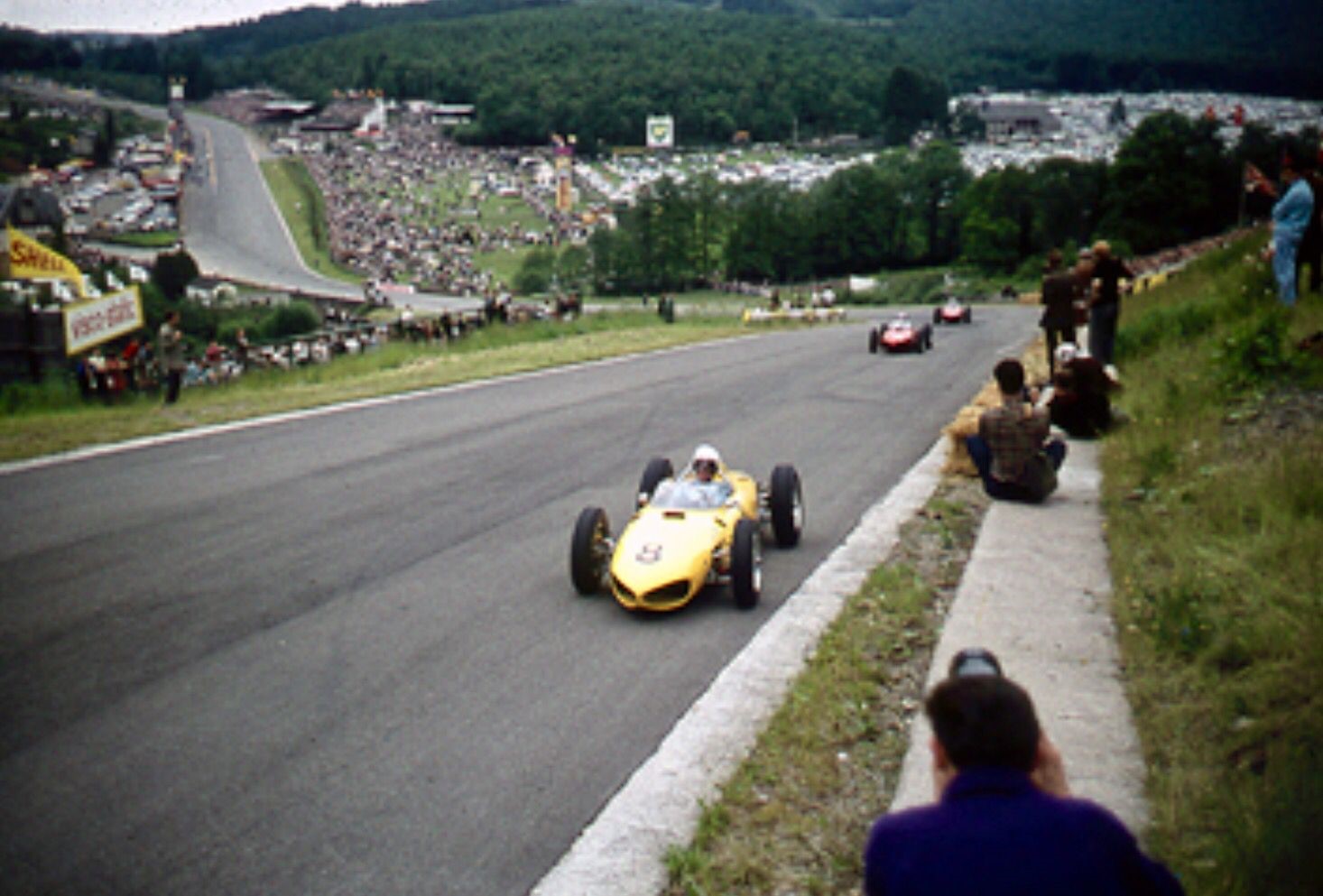
Olivier Gendebien, Ferrari 156 F1, Belgian GP at Spa in 1961.
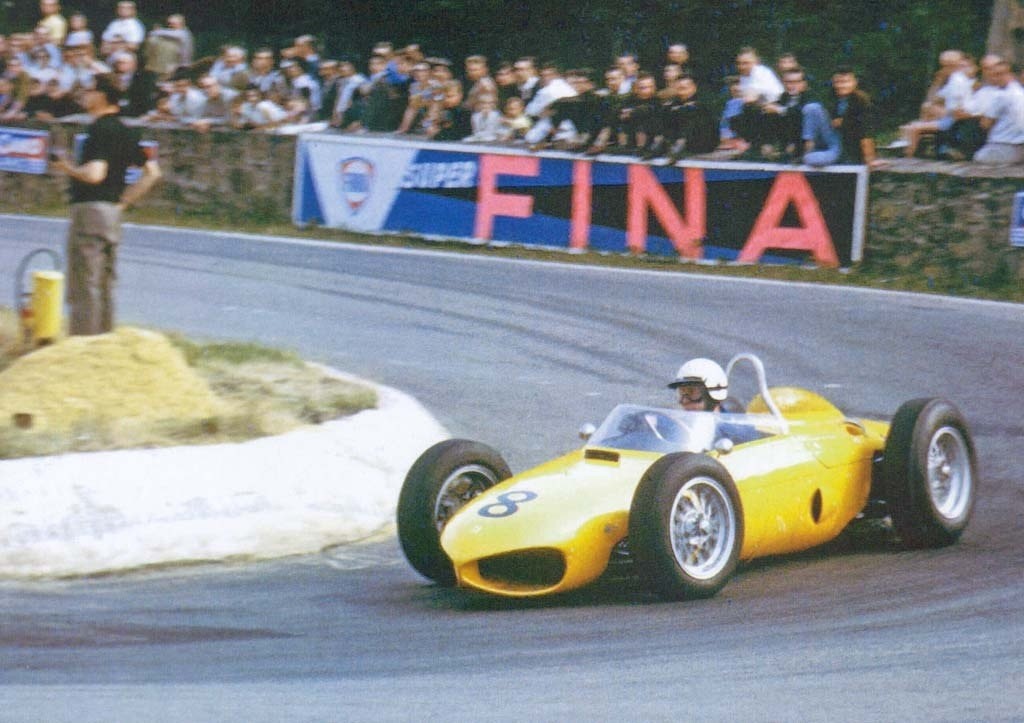
1961 Belgian GP at Spa, Gendebien finished fourth in a Ferrari 156, behind the other similar cars of Phil Hill, ‘Taffy’ Von Trips and Richie Ginther.
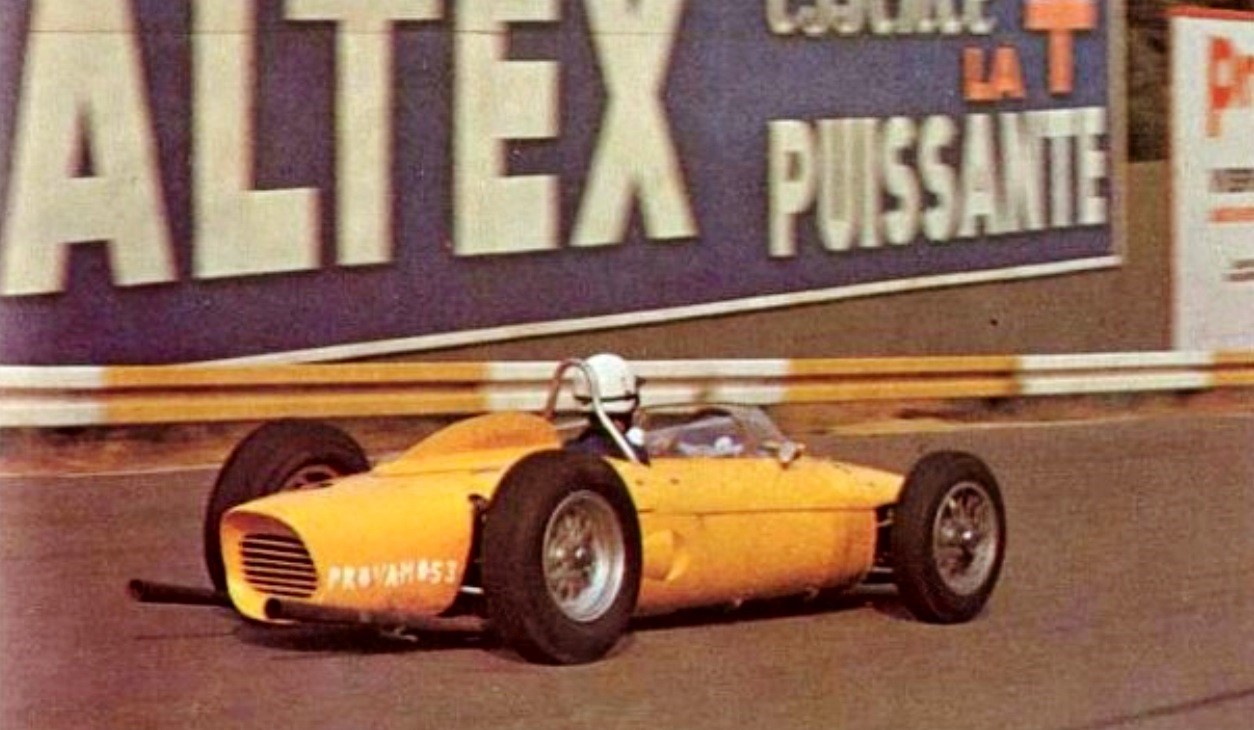
Rear of Gendebiens Ferrari 156, Spa 1961. Pinterest.
The result was reversed at Spa, where Ferrari finished one-two-three-four and Hill took his first win against a representative field, following that boycotted Monza race the previous year.
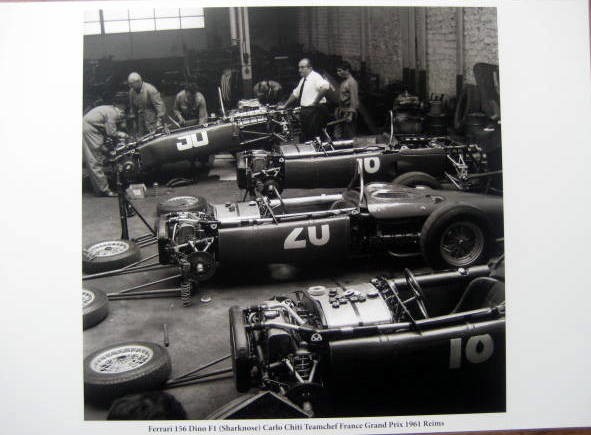
Team chief Carlo Chiti and Ferraris 156 Dino F1 (Shark Nose) at 1961 France Grand Prix in Reims.

Reims, France, 30 June - 2 July 1961. Carlo Chiti, Ferrari engine designer, sitting on the pit wall with Phil Hill and Richie Ginther.
Reims was a sensational race. Hill, Ginther and von Trips retired and Giancarlo Baghetti, making his first start in a private Ferrari, just pipped Gurney's Porsche to the line. Baghetti remains the only driver to have won on his Grand Prix debut.
It was back to normal at Aintree as von Trips, Hill and Ginther finished one-two-three in the rain.
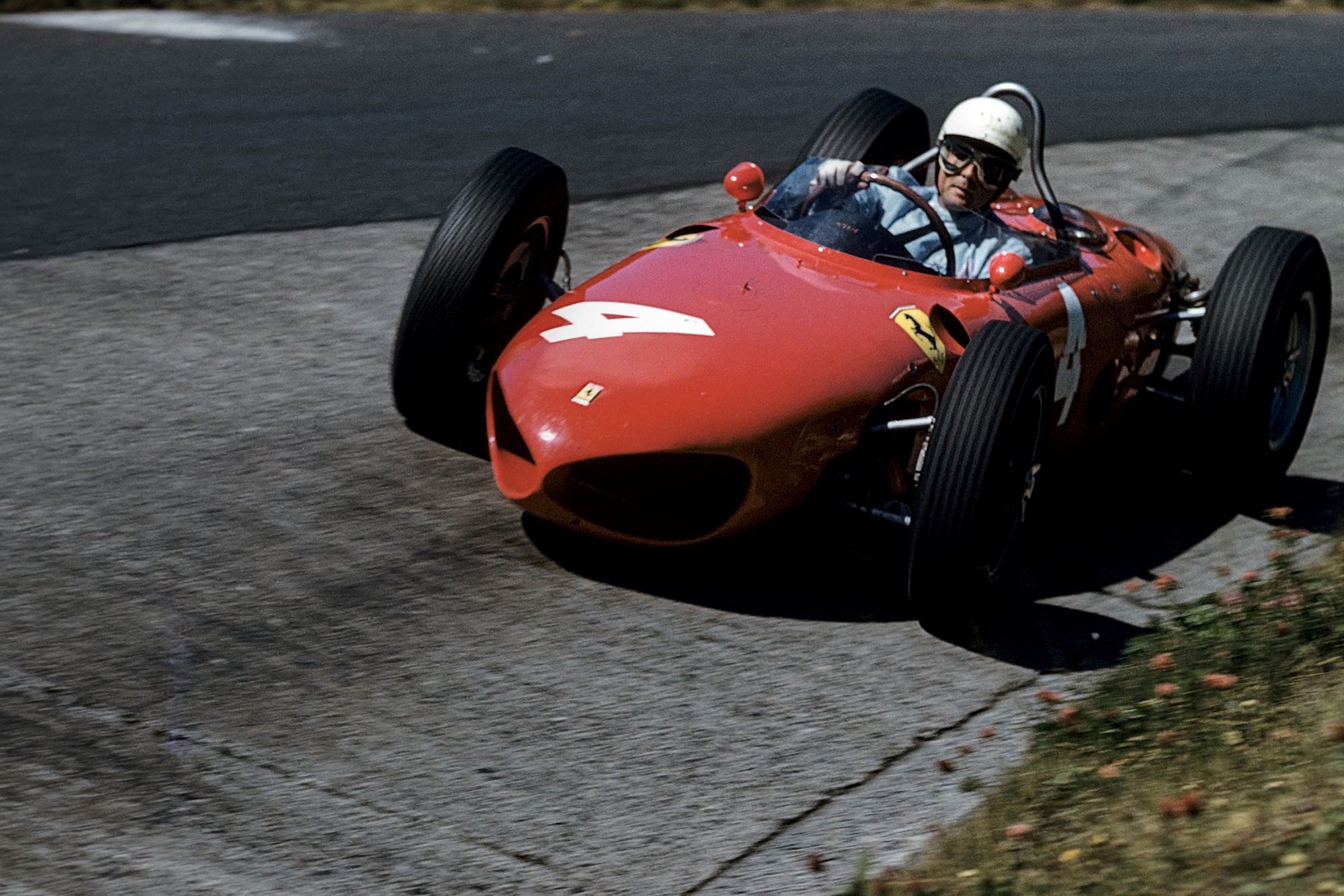
Phil Hill at the German GP in 1961.
Moss had tried to mix it with the Italian cars before his brakes failed, but then struck back at the Nurburgring.
Nobody objected to the banks at Monza this time. Ironically the race, which should have seen the title fight between von Trips and Hill reach a crucial stage, turned to tragedy.
The US Grand Prix moved to a third new venue in as many years in the form of Watkins Glen. With Ferrari not entering, Moss and Brabham battled for the lead. When they both retired, Ireland came through to score his first (and only) win and the first for the works Lotus team. Gurney was again second, ahead of the BRM of Brooks. At the end of the year Brooks announced his retirement, after a distinguished career which was often overshadowed by the heroic exploits of Moss and Hawthorn.
Reproduced from The Ultimate Encyclopedia of Formula One, published by Carlton Books.
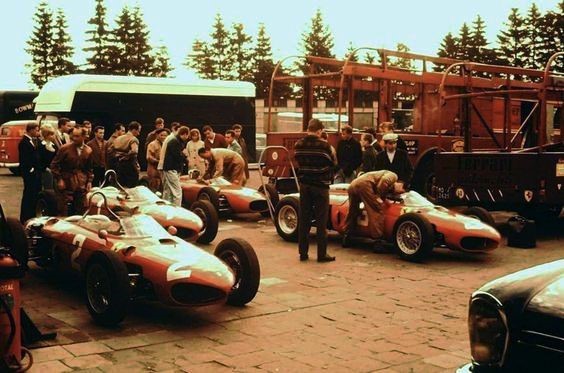
The evocative Ferrari 156 F1 Sharknose was Ferrari’s first Formula One machine with the engine positioned behind the driver. 28 March 2019.
The result of a brief given by Ferrari to new Technical Director, Carlo Chiti, with the clear instruction to create a car capable of winning the Formula One World Championship for the Scuderia under new downsized 1.5 litre engine regulations, the Sharknose did not disappoint. The 156 boasted a simple and clever design, with a tubular chassis dressed in aluminium panels.
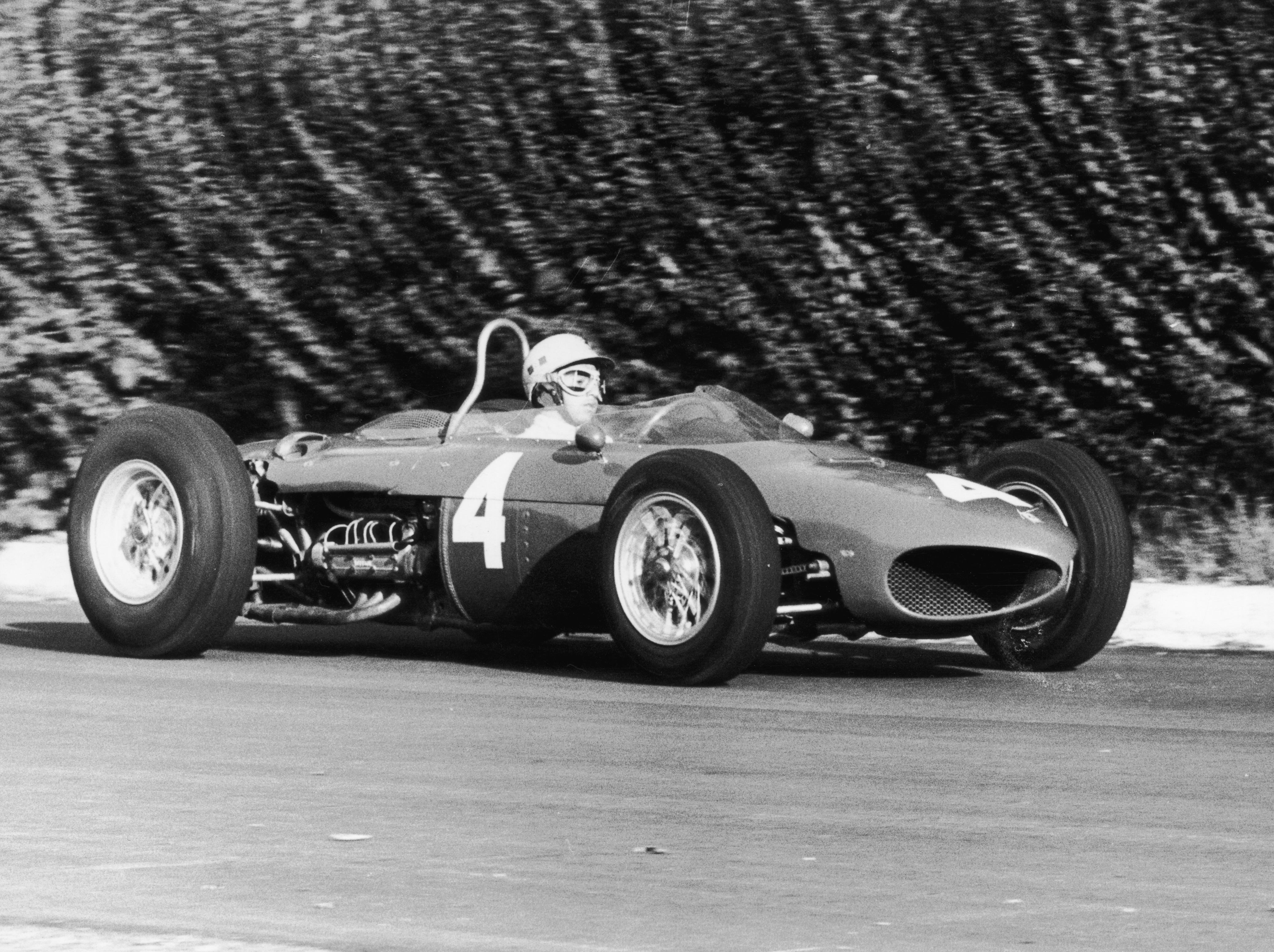
So successful was the little Sharknose that it won the first five out of seven races in the Championship.
The 1961 Ferrari 156 “Sharknose” Formula One Car. 2016.
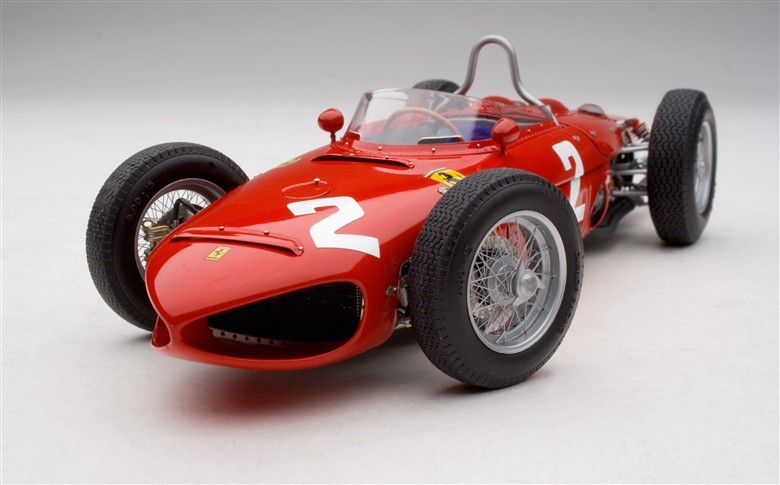
Photo: the scuderia.
Ferrari is one of the most famous car companies in the world, both in racing heritage and super cars. Having been apart of the first Formula one race back in 1950 up until the current 2016 season, Ferrari has always lead the pack when it came to innovation and design of its race cars. There has been a Ferrari on the starting grid over 910 consecutive races since the debut back in 1950.
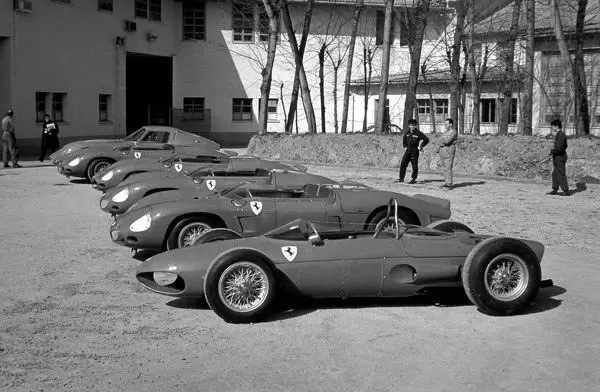
The 156 at Maranello, home of Ferrari, with a selection of F1 racing Ferraris.
One of the more interesting cars that Ferrari used was during the 1961 season when they debuted the new 156. Due to its unique front air vents it earned the nickname “Sharknose”. Looking at the front of this thing it’s pretty obvious how it earned that name. The 1961 season F1 had changed rules for the engine size requirements, decreasing from a 2.5L down to a 1.5L. The horsepower coming from these small engines was only 190hp and that’s in a F1 car! Today’s cars are multi-million dollar and have 700+hp, so it’s crazy to think a F1 car has the same amount of power as say a Honda Civic. But the Sharknose was extremely powerful in its debut season.
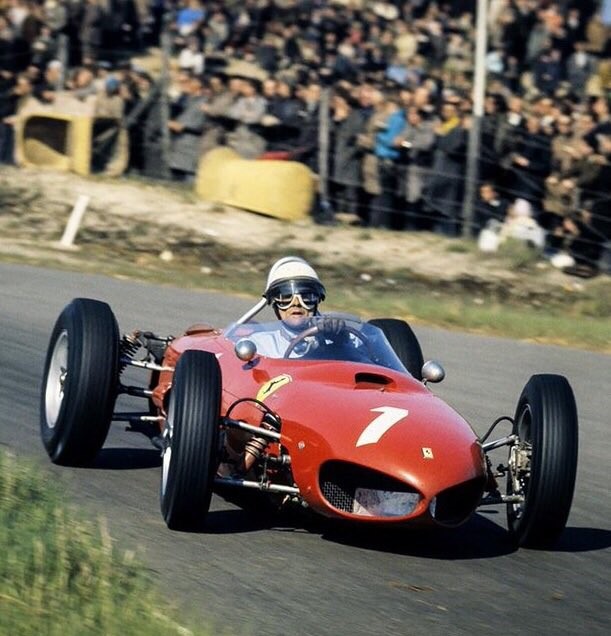
Phil Hill, Ferrari, at Zandvoort, Netherlands, in 1962.
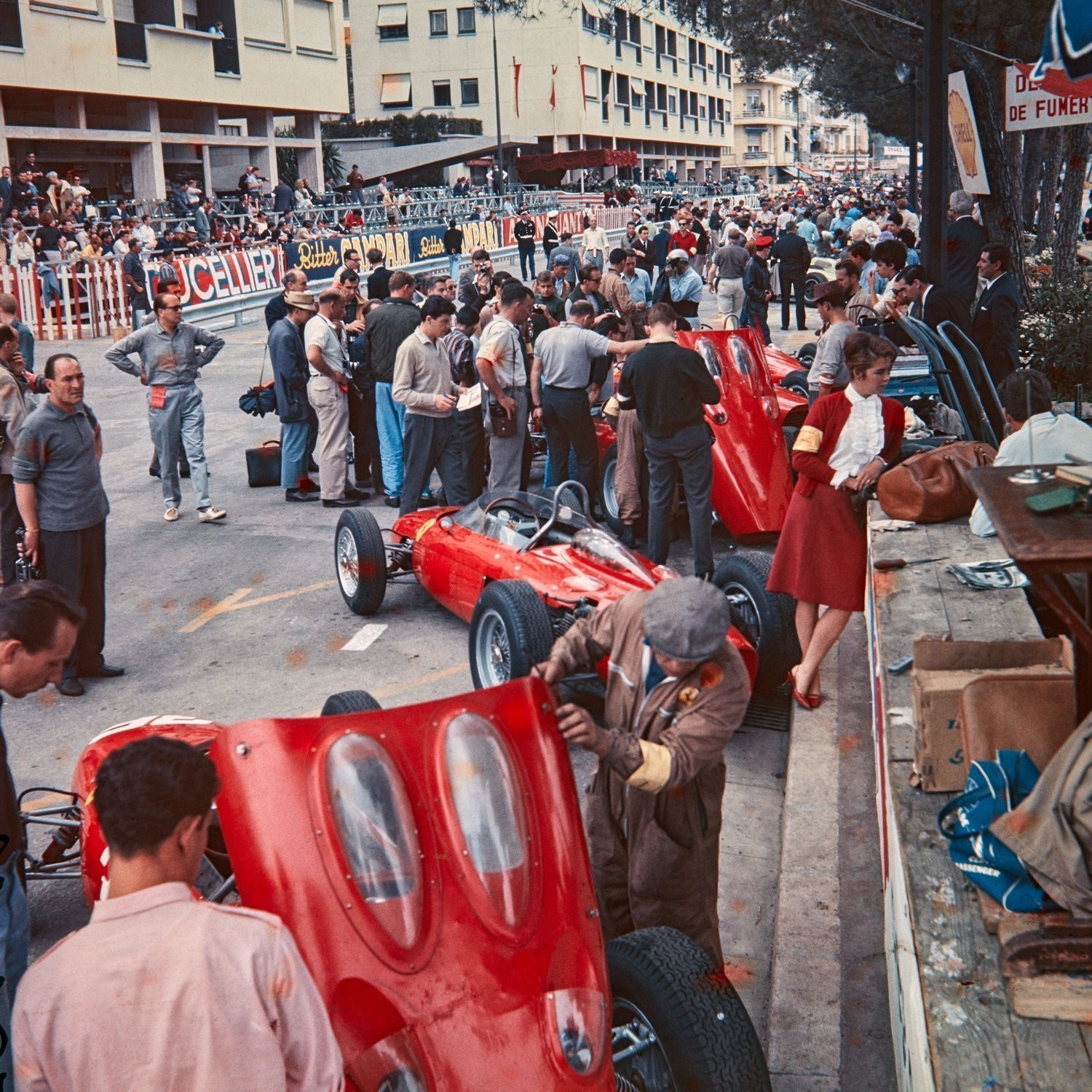
The Ferrari pits before practice for the 1962 Monaco Grand Prix. Grand Prix photo.
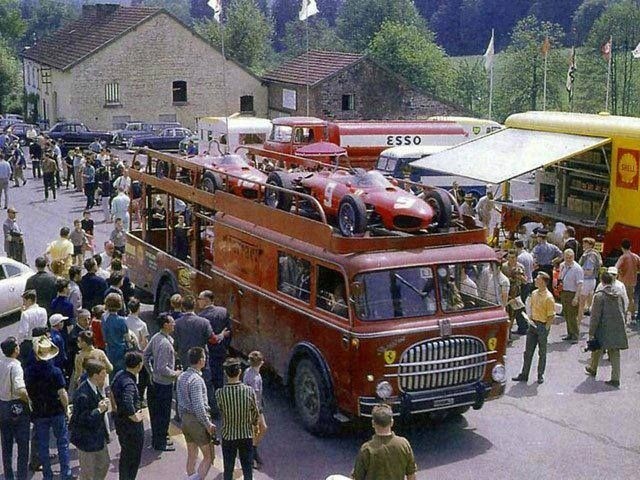
Spa 1962. Phil Hill n.9 and Willy Mairesse n.10 156’s arrive from Maranello atop the Fiat transporter. A third car is underneath. Ferrari entered cars for Ricardo Rodriguez and Giancarlo Baghetti as well. Unattributed.
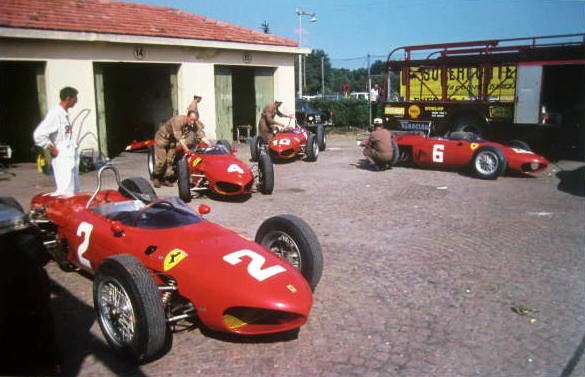
Ferrari 156 Dino Sharknose, paddock Italian Grand Prix, Monza 1962.
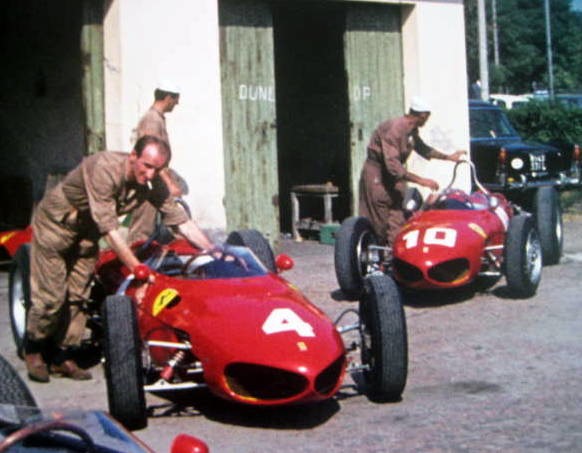
Ferrari 156 Dino Sharknose, paddock Italian Grand Prix, Monza 1962.
Supposedly there was a 200 hp, thanks to a new 24 valve setup Ferrari was going to use for the 1962 season, but it never actually happened and, unfortunately, they weren’t able to achieve the same results as the year before. In 1963 Ferrari did increase power up to 200 hp but still they couldn’t get the top spot on the podium and, at the end of the season, the Sharknose was retired. Ferrari had a very strict policy that, in order to keep the technology of their cars a secret, all cars were to be destroyed and scrapped. Luckily, there were a few that didn’t go to the crusher.
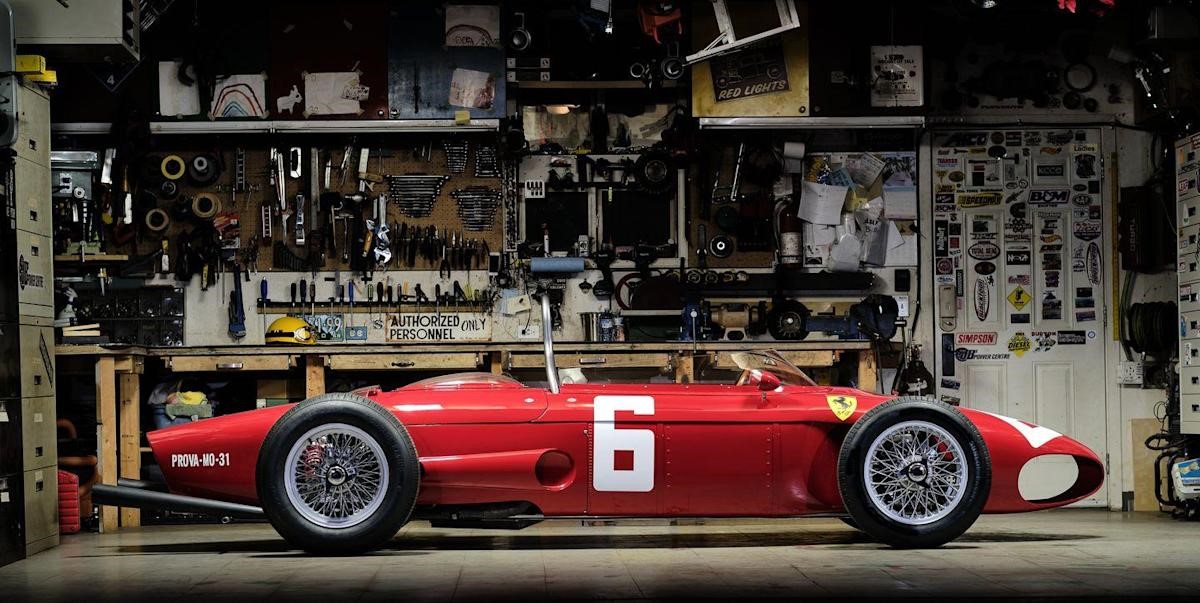
The Sharknose built by Brandon Hegedus. Photo credit James Kelly.
Many replicas have been made and can be seen at many high end specialty events all over the world.
Videos



Comments
Authorize to comment